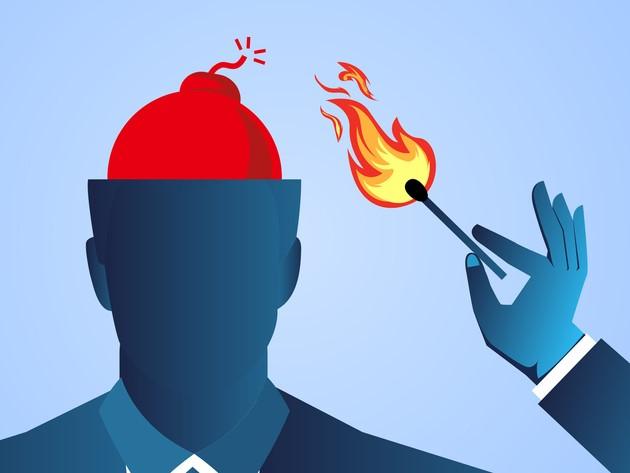
Knowledge and approaches needed for trauma-informed teaching
As a therapist, educator and researcher, I’ve become aware of how common trauma experiences are, both generally and within particular occupations. It seems inevitable that our students carry their trauma histories with them into the classroom. But so do we. Understanding the basics of what this means can enhance learning and avoid harm.
Trauma can be a response to a singular event but can also develop gradually. An important trauma for educators to consider is that of “recognition trauma”. Isha McKenzie-Mavinga gave this label to the trauma of “emerging from being silenced about racism”, but we might also expect to see it in relation to other forms of discrimination or systemic privilege. As we increasingly engage with these issues with students, we need to be aware of the impact this has on them – and us.
- Spotlight guide: Catching students before they fall
- Managing excluding behaviour and bigotry in the classroom
- Using the ‘pick three’ method to avoid burnout in higher education
It’s also important to recognise the organisational aspect of a trauma-informed approach. For example, universities claiming to be trauma-aware may also need to change, remove or introduce processes and structures, so as to reduce the burden imposed on those who work in or study in them.
Trauma states do not promote learning
Polyvagal theory, developed by Stephen Porges, tells us that we’ve evolved three mechanisms for dealing with threat. These are the dorsal vagal state (let’s call that the “collapse”), the sympathetic nervous system (“fight or flight”) and, most recently evolved, the ventral vagal state (“safe and social”).
The safe and social state is where we are most of the time when calm, relaxed and engaged. When we sense a threat in our environment, we fall into one of the other two states. In the fight-or-flight state, our whole body, including our brain, gets ready for action, not for connection or thinking. The “flight” aspect might also happen at a symbolic or partial level – for example, finding something else to focus on to distract us from the threat. Either way, we won’t really be engaging with PowerPoint slides or erudite instructors.
If the threat is severe or inescapable, we’ll drop into the collapse state. At its worst, this will be literal collapse, but more commonly it can be experienced as zoning out (which looks a lot like daydreaming) or going blank and being unable to engage. It can also be experienced as extreme, unexplained fatigue. Once more, learning is very unlikely to take place, and even basic engagement will be a struggle.
Trauma sometimes includes a displacement of stimulus and response
For me, the idea that best helped me start to understand the way trauma revisits us relates to the different speeds at which we process incoming information emotionally and cognitively. As new information comes in from our senses, it first passes through the limbic system (sometimes referred to colloquially as the lizard brain). This is the part of the brain that is responsible for our most basic survival responses, and it is, thankfully, quick! Its responses are not in our awareness, although we can become consciously aware of their effects – racing heart, gut feeling, sweaty palms, etc. Our thinking brain, the cortex, only receives the information later. So a smell of burning might trigger our lizard brain to detect a threat and jump up, before our thinking brain realises that we set the toaster too high and calms us back down.
However, this coordination only works if the stimulus that triggered the response can be made sense of. When a traumatic event happens, we often take in stimuli that are around during the incident but are unrelated to it. The song playing on the radio during an accident or a smell of food in the air when an assault took place, for example. When these stimuli later reappear in a different context, they may cause our lizard brains to react – but leave our thinking brains with no cogent explanation for the sense of threat, and therefore no reason to dampen our response. As a result we often can recognise trauma responses by their ability to take us out of the here and now.
Trauma responses have a relational element
Another helpful insight from polyvagal theory is that humans engage in a process of co-regulation. In our safe and social state our bodies and brains are tuned in to pick up signals from each other. With or without awareness we read each other’s faces and behaviour for signs that everything is OK – or not. If we do sense a risk in the environment, we’ll drop into one of the other states described above.
Reducing the effects of trauma in the learning environment
The first step in developing a trauma-informed approach is recognising that trauma may be present in the environment and having at least a rudimentary understanding of how it operates. Based on the above, the following approaches might be a good start for creating safer learning environments:
- When designing lessons, consider whether materials might invoke trauma responses and, if so, whether they are necessary, given the cost they may incur. Do this with the make-up of student cohorts in mind.
- If the material is necessary, consider informing students in advance, so they can make a decision about attendance, and so they don’t develop an expectation that difficult material could appear at any moment.
- Consider whether “problematic” student behaviours (such as being distracted, staring blankly or appearing obstructive) might be coming from a trauma response and reformulate responses accordingly.
- Remember that co-regulation is happening. How we act and feel in the classroom will have an impact on our students. Awareness can stop a spiral downward.
- While teaching, stay attentive to whether we are responding to the here and now, or whether our bodily or behavioural response is out of place. If it is out of place, ask whether this might be because of something in our own history or possibly something we might be picking up from a student through a process of co-regulation. To do this, we need to have already engaged with the following two points:
- Understand how our own bodies respond to trauma or stress: what are the signs that indicate we are entering a fight or flight or a collapse state?
- Understand our own trauma histories: what would cause us to enter into a trauma response if it was present in the classroom?
These are just suggestions; really, it’s a matter of us holding in mind the information outlined above when designing and delivering our materials and being as fully present as possible in the learning environment.
Marc Mason is senior lecturer in law at the University of Westminster. He is also a therapist in private practice.
If you would like advice and insight from academics and university staff delivered direct to your inbox each week, sign up for the Campus newsletter.




